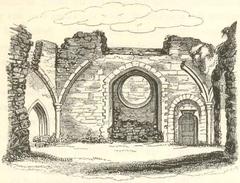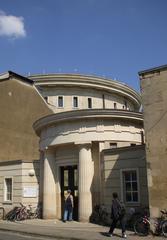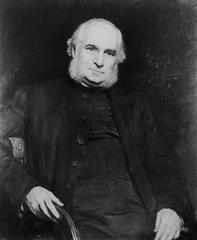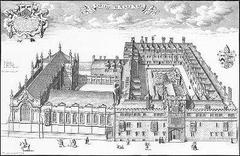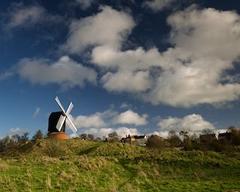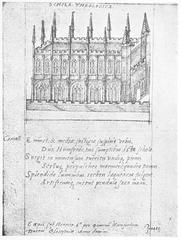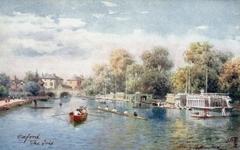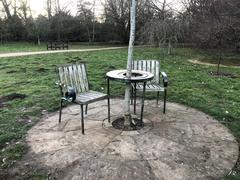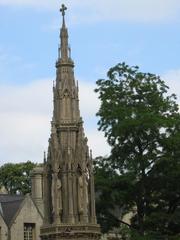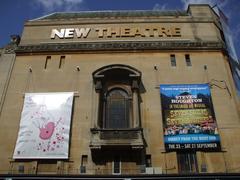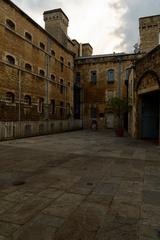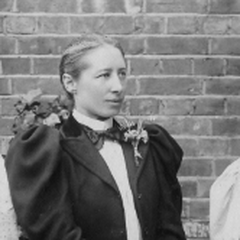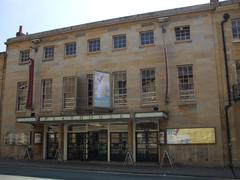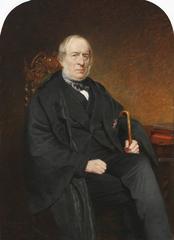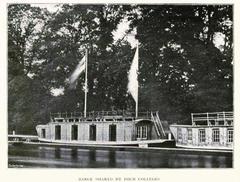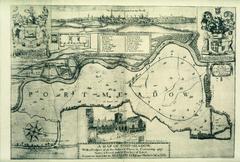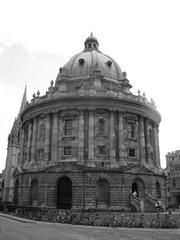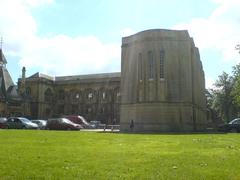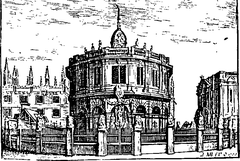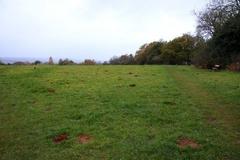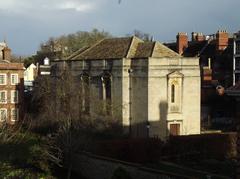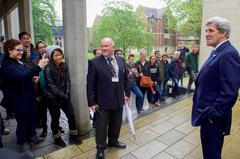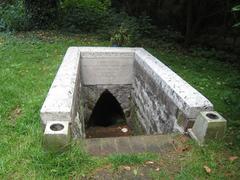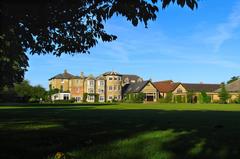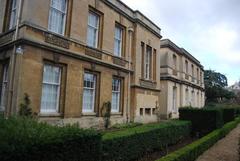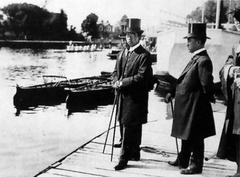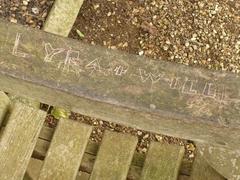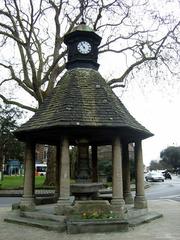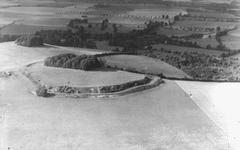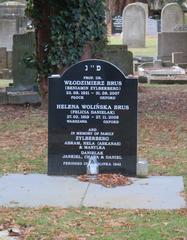Bastion 21 Visiting Hours, Tickets, and Oxford Historical Sites Guide
Date: 14/06/2025
Introduction
Bastion 21 stands as one of Oxford’s most captivating and best-preserved medieval fortifications, offering a rare and vivid connection to the city’s layered history. Situated within the grounds of New College and visible from several vantage points around the city, Bastion 21 exemplifies the evolution of Oxford’s urban defenses from their early origins through the high medieval period. This comprehensive guide provides everything you need to plan a visit—from historical context and architectural highlights to practical visitor information, accessibility, and engagement opportunities.
Whether you are a history aficionado, a student, or a curious traveler, this resource invites you to explore Bastion 21 and discover its role in shaping Oxford’s enduring heritage (British History Online; Historic UK; Oxford History; Oxford City Council).
Origins and Construction of Oxford’s City Walls
The defensive network that defines Oxford’s medieval landscape dates back to the late 9th or early 10th century, during the reign of Alfred the Great. Early fortifications consisted mainly of earthworks and timber, built to resist Viking incursions. As Oxford’s prominence grew, so did its defenses. In the early 13th century, major reconstruction transformed these rudimentary barriers into formidable stone walls, reinforced with semi-circular bastions such as Bastion 21 (British History Online).
The 13th-century stone wall spanned approximately two miles and featured at least 21 bastions. These improvements were supported by royal grants and local obligations, with the “mural mansions” system ensuring sections of wall were maintained by designated property owners (Oxford History).
Bastion 21: Architectural Features and Preservation
Bastion 21 is one of the finest surviving examples of the semi-circular bastions that punctuated Oxford’s city wall. Constructed of local rubble with ashlar dressings, it originally featured an internal wall walk for defenders. The bastion’s semi-circular plan, robust masonry, and surviving lower structure provide a direct glimpse into medieval military engineering (British History Online; Oxford History).
Its remarkable state of preservation owes much to its incorporation into New College’s gardens after the college’s founding in 1379, which protected it from urban development and demolition. Today, the bastion forms a dramatic backdrop to the college’s tranquil grounds, with interpretive signage and guided tours enhancing the visitor experience.
Historical Role and Strategic Significance
Oxford’s city walls and bastions were vital for defending the city during periods of unrest, including the Anarchy of the 12th century and the English Civil War. Positioned strategically, Bastion 21 and its counterparts enabled defenders to cover city approaches and provided elevated platforms for archers and artillery (Historic UK; Oxford History). Over time, as military threats diminished, the walls remained important as civic boundaries and influenced the city’s urban development.
Bastion 21 in the Context of New College
The founding of New College in the late 14th century led to the preservation of a major section of the city wall, including Bastion 21. Integrating the bastion into the college’s perimeter ensured its survival, making it one of the best-preserved portions of Oxford’s historic defenses. Visitors to New College can observe the interplay between medieval military architecture and collegiate gardens—a testament to adaptive reuse and careful stewardship (Oxford History).
Archaeological and Heritage Status
Bastion 21 is a designated listed structure and forms part of a Scheduled Ancient Monument, reflecting its national significance. Archaeological research has revealed construction techniques, earlier Saxon earthworks, and the continuity of defensive strategies from the city’s earliest days through the medieval era (Oxford History). The site continues to be a focus for research and conservation, supported by local authorities and academic institutions (Oxford City Council).
Practical Visitor Information
Access and Visiting Hours
- New College Gardens (Bastion 21): Open to visitors daily, typically 10:00 AM–5:00 PM, with hours sometimes varying during term time and special events. Check the New College website for current details.
- External Viewing: Bastion 21 can also be viewed from public vantage points near Christ Church and the Westgate area.
Tickets and Entry Fees
- New College Admission: Entry to the gardens and Bastion 21 is included with the college ticket (approx. £5 for adults; discounts for students and seniors; children under 16 often free).
- External Viewing: Free from public streets.
Guided Tours
- Walking tours incorporating Bastion 21 are offered by New College and local tour providers. Advance booking is advised for group tours.
Accessibility
- While much of New College is accessible, some areas near Bastion 21 feature uneven terrain. Contact the college in advance regarding specific accessibility needs.
Transport and Parking
- Centrally located, New College is easily accessible by public transport. Limited city parking is available; walking or using public transport is recommended.
Nearby Attractions
- Oxford Castle, the Ashmolean Museum, and the Bodleian Library are all within walking distance.
Frequently Asked Questions (FAQ)
Q: What are Bastion 21’s visiting hours?
A: Typically 10:00 AM–5:00 PM via New College; external views available during daylight hours.
Q: Is there an entry fee?
A: Yes, for New College admission; external viewing is free.
Q: Are guided tours available?
A: Yes, through New College and local operators.
Q: Is Bastion 21 accessible for wheelchairs?
A: Access is limited; contact New College for details.
Cultural and Educational Value
Architectural Heritage
Bastion 21 illustrates the shift from early medieval fortifications to sophisticated bastion systems, reflecting broader European military innovations (Nature.com). Its semi-circular projection, robust geometry, and defensive design echo the influence of Italian, French, and English military engineering.
Symbolism and Identity
As a symbol of Oxford’s resilience, Bastion 21 embodies the interplay between military, civic, and academic life. Its continued preservation fosters local identity and pride, while serving as a touchstone for educational and cultural programming.
Educational Opportunities
Bastion 21 is featured in tours, educational trails, and digital resources, offering insights into the geometry of fortification, the evolution of artillery, and Oxford’s historical context. Schools and universities integrate the site into curricula, and heritage organizations use it as a platform for workshops and public engagement (Nature.com).
Community Engagement
Bastion 21 is actively included in local heritage events like Oxford Open Doors. Community groups, volunteers, and educational partnerships ensure inclusive access, ongoing conservation, and vibrant programming (Oxford City Council). Digital initiatives, including virtual tours and social media, further extend its reach.
Visual and Multimedia Resources
- Include high-quality images of Bastion 21’s architecture and setting, with SEO-optimized alt text such as “Bastion 21 Oxford historical fortification.”
- Interactive maps and virtual tours are available via Oxford History: City Wall.
- Digital platforms offer remote access to interpretive content and event information.
Summary and Visit Tips
Bastion 21 is an essential site for anyone interested in Oxford’s medieval heritage. Its preservation within New College and visibility from public streets make it accessible to a wide audience. For the best experience, check current visiting hours, consider joining a guided tour, and use digital resources for deeper context.
To maximize your visit:
- Plan ahead and book tickets online for New College.
- Wear comfortable shoes and weather-appropriate clothing.
- Respect site guidelines to help preserve this historic monument.
For up-to-date information, visit the official New College, Christ Church, and Oxford City Guide websites.
Call to Action
Discover more with the Audiala app, which offers interactive guides and augmented reality experiences for Oxford’s historical sites. Join our community on social media, participate in local events, and stay informed about conservation efforts and special programming.
Sources and Further Reading
- British History Online
- Oxford History
- Historic UK
- Oxford City Council
- Oxford City Guide
- Nature.com
- Oxford Open Doors



